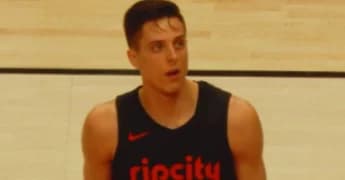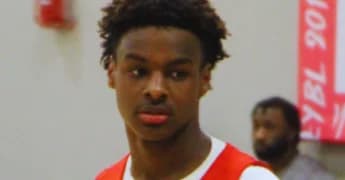As the NBA season charges forward, defensive maneuvers have become paramount Post-All-Star Break, with teams determined to disrupt the scoring spree that dominated courts earlier in the year. New Orleans Pelicans’ forward Herbert Jones, celebrated for his defensive prowess, highlights the importance of keeping opponents in check—a formidable challenge in the cutthroat world of professional basketball.
Defensive Resurgence: NBA Teams Buckle Down Post-All-Star Break
Contrary to widespread assumptions that the league has abandoned defense in favor of high-octane scoring, recent games have witnessed a marked resurgence in defensive grit, especially following the flamboyant offensive showcase at the record-breaking All-Star Game. Post the mid-February spectacle, teams have significantly curtailed opponents’ scoring opportunities, with average points per game dropping by approximately four points, from a staggering 115.5 to a more modest 111.3.
Speculation abounds regarding the reasons behind this defensive renaissance. Some attribute it to referees exercising leniency, possibly in response to players exploiting loopholes in defensive regulations, while others cite the intensifying playoff race as a motivating factor. However, the truth may lie in the subtle reduction of fouls called per game (from 19.4 to 17.5 post-break) and a subsequent decline in free-throw attempts (22.7 to 19.8)—a trend favoring defensive stability over free-scoring extravagance.
While the NBA disavows any directive to curtail foul calls, coaches like Miami’s Erik Spoelstra speculate that teams seizing the initiative to police their own defensive lines could be driving this shift. Such sentiments find resonance with Denver Nuggets’ coach Michael Malone, who attributes his team’s defensive resurgence to heightened discipline and urgency, crucial elements in the relentless pursuit of victory.
For players like Jones, defense isn’t merely a tactic; it’s a philosophy ingrained through rigorous training. Drawing from his collegiate experience at Alabama, Jones emphasizes the significance of fundamental techniques, advocating for a chest-first approach that prioritizes footwork over reckless reaching—a sentiment shared by fellow players navigating the fine line between aggressive defense and foul trouble.
Amidst the defensive revival, the spotlight also falls on candidates vying for the prestigious NBA Defensive Player of the Year award. French sensation Rudy Gobert, a towering presence for the Minnesota Timberwolves, stands as a frontrunner, closely trailed by emerging talents like San Antonio Spurs’ Victor Wembanyama and Cleveland Cavaliers’ Jarrett Allen.
The ongoing season, characterized by its offensive fireworks, offers a stark contrast to the gritty defensive battles of yesteryears—a dichotomy encapsulated in the words of seasoned coaches like Gregg Popovich, who, while acknowledging the league’s evolving landscape, reminisces about a bygone era where defensive stalwarts reigned supreme.
In this ever-evolving basketball ecosystem, adaptation remains key. Coaches like Atlanta’s Quin Snyder and Mavericks’ Jason Kidd stress the importance of staying ahead of the curve, as teams oscillate between defensive fortitude and offensive flair in pursuit of ultimate glory. As the playoffs loom large on the horizon, one thing remains certain: in the NBA, the quest for supremacy is a relentless tug-of-war between offense and defense—a timeless struggle that defines the essence of the sport.
As the NBA season charges forward, defensive maneuvers have become paramount Post-All-Star Break, with teams determined to disrupt the scoring spree that dominated courts earlier in the year. New Orleans Pelicans’ forward Herbert Jones, celebrated for his defensive prowess, highlights the importance of keeping opponents in check—a formidable challenge in the cutthroat world of professional basketball.
Defensive Resurgence: NBA Teams Buckle Down Post-All-Star Break
Contrary to widespread assumptions that the league has abandoned defense in favor of high-octane scoring, recent games have witnessed a marked resurgence in defensive grit, especially following the flamboyant offensive showcase at the record-breaking All-Star Game. Post the mid-February spectacle, teams have significantly curtailed opponents’ scoring opportunities, with average points per game dropping by approximately four points, from a staggering 115.5 to a more modest 111.3.
Speculation abounds regarding the reasons behind this defensive renaissance. Some attribute it to referees exercising leniency, possibly in response to players exploiting loopholes in defensive regulations, while others cite the intensifying playoff race as a motivating factor. However, the truth may lie in the subtle reduction of fouls called per game (from 19.4 to 17.5 post-break) and a subsequent decline in free-throw attempts (22.7 to 19.8)—a trend favoring defensive stability over free-scoring extravagance.
While the NBA disavows any directive to curtail foul calls, coaches like Miami’s Erik Spoelstra speculate that teams seizing the initiative to police their own defensive lines could be driving this shift. Such sentiments find resonance with Denver Nuggets’ coach Michael Malone, who attributes his team’s defensive resurgence to heightened discipline and urgency, crucial elements in the relentless pursuit of victory.
For players like Jones, defense isn’t merely a tactic; it’s a philosophy ingrained through rigorous training. Drawing from his collegiate experience at Alabama, Jones emphasizes the significance of fundamental techniques, advocating for a chest-first approach that prioritizes footwork over reckless reaching—a sentiment shared by fellow players navigating the fine line between aggressive defense and foul trouble.
Amidst the defensive revival, the spotlight also falls on candidates vying for the prestigious NBA Defensive Player of the Year award. French sensation Rudy Gobert, a towering presence for the Minnesota Timberwolves, stands as a frontrunner, closely trailed by emerging talents like San Antonio Spurs’ Victor Wembanyama and Cleveland Cavaliers’ Jarrett Allen.
The ongoing season, characterized by its offensive fireworks, offers a stark contrast to the gritty defensive battles of yesteryears—a dichotomy encapsulated in the words of seasoned coaches like Gregg Popovich, who, while acknowledging the league’s evolving landscape, reminisces about a bygone era where defensive stalwarts reigned supreme.
In this ever-evolving basketball ecosystem, adaptation remains key. Coaches like Atlanta’s Quin Snyder and Mavericks’ Jason Kidd stress the importance of staying ahead of the curve, as teams oscillate between defensive fortitude and offensive flair in pursuit of ultimate glory. As the playoffs loom large on the horizon, one thing remains certain: in the NBA, the quest for supremacy is a relentless tug-of-war between offense and defense—a timeless struggle that defines the essence of the sport.







